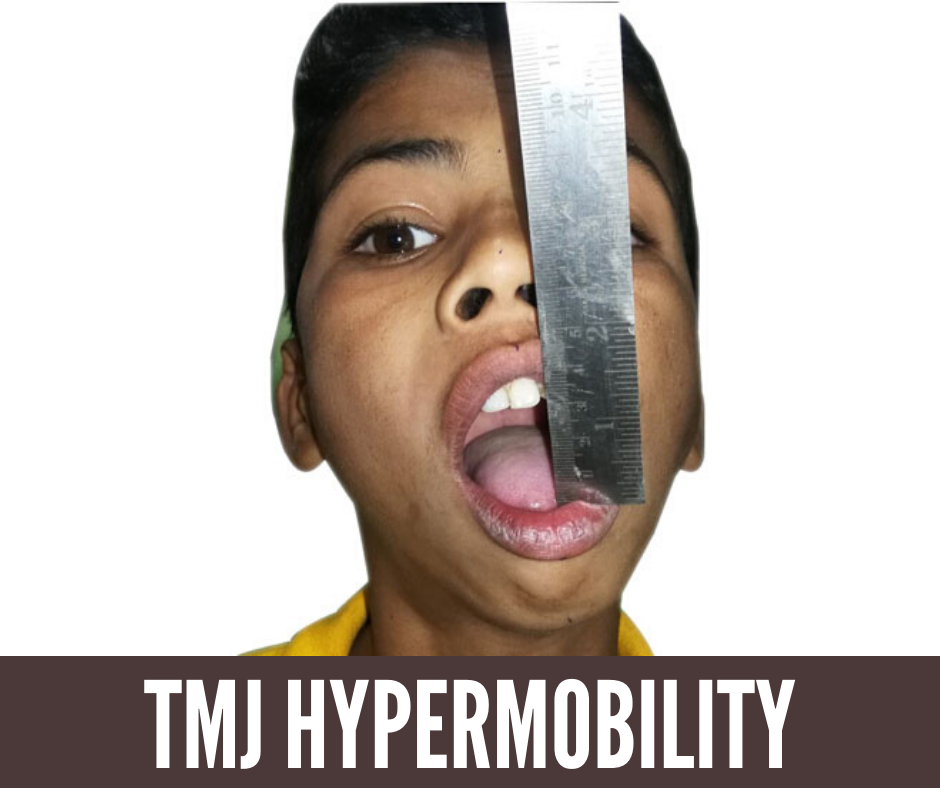Let’s first see what exactly is TMJ hypermobility as very few people know about it. Then, we will discuss its causes and characteristics.
What is TMJ Hypermobility?
Hypermobility is shown by early and greater forward gliding of one or both TMJs. This forward gliding causes the laxity of the capsule and ligaments and the temporalis tendon. The overstretching of these structures with the time can cause disk displacement/derangement to occur in single or both jaw joints or temporalis tendinitis. But, pain, functional loss, and mostly arthritic changes can set in. In extreme cases, the jaw can dislocate from its position and stay open, called an open lock.
The optimum range of jaw opening is 40 and 50 mm. The first 25 mm is mainly through the rotation which arises in the bottom half of joints in between the underneath surface of the disk and mandibular condyle of the jaw bone. The left 15 to 25 mm is achieved mainly through the forward gliding motion that arises in the middle of the temporal bone of the skull and the upper surface of the disk. Most patients suffering from TMJ hypermobility open more than 50 mm and could feel an eminence click.
For confirming that you suffer from TMJ hypermobility, we have some questions for you. If the answer to any of these questions is yes, you probably suffer from it.
- Q.1 In your childhood or teenage did your knee cap or shoulder dislocate during one or more than one time?
- Q.2 Can you bend your thumb to touch your forearm?
- Q.3 Do you believe that you are double-jointed?
- Q.4 Can you place your hands completely on the floor without folding your knees?
- Q.5 In your childhood, did you made weird shapes by bending your body in a different way other than normal twisting and bending?
If the answer to any of the two questions is yes, then it is a strong sign that you are suffering from TMJ hypermobility with greater accuracy.
Causes of TMJ Hypermobility
1. Natural Reasons:
- Yawning or Vomiting
- Wide biting or seizure disorder
2. External Reasons:
2.1 Injuries:
- Endoscopy
- Unnecessary hyperextensions
- Flexion, extension injury to the mandible
3. Miscellaneous Reasons:
- Occlusal discrepancies
- Internal derangement
- Host vertical dimensions
Clinical Characteristics of Hypermobility
Subluxation is identified by the mandible joining/ catching which is open for small period before it decreases itself into the shallow depression.
When the internal derangement is combined with hypermobility, higher number of clicks can be experienced that indicate the condyle breakage (sudden and complete) over the posterior and anterior edges of the disk.
Click arises only on wide opening and not on protrusive or lateral movement /excursions.
If you are experiencing any symptoms related to TMJ hypermobility mentioned above, don't worry, Dr. Anurag Bhargava is here for you with the best TMJ treatment in India.


Excellent write-up. I certainly appreciate this site. Thanks! Delores Tris Ellerd
As a web site owner I believe the material here is reallyfantastic. I thank you for your time. You should keep it up forever! Best of luck.. Jaquelin Rafferty Golter
It is in point of fact a great and helpful piece of info. I am happy that you just shared this helpful information with us. Please stay us informed like this. Thanks for sharing. Suzette Yorgo Worsham